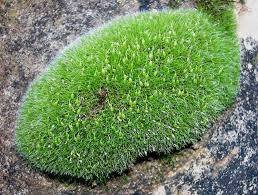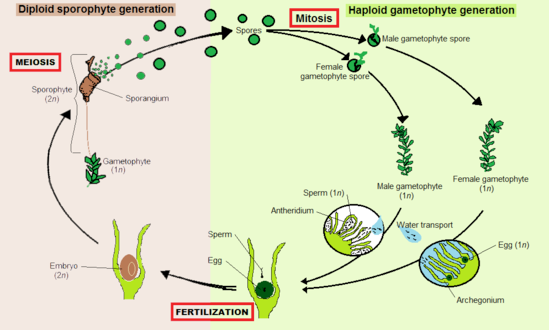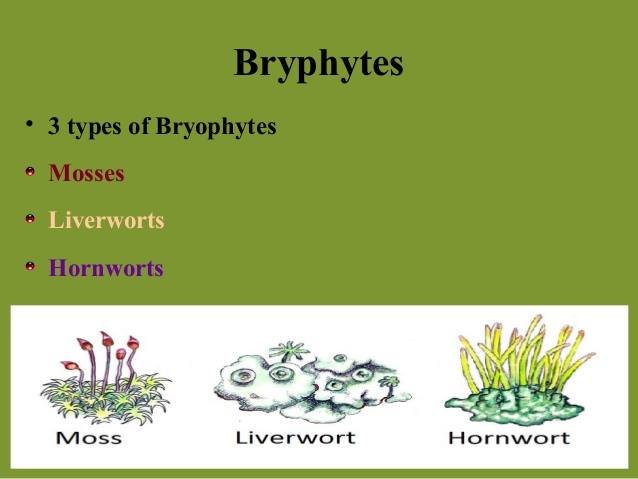Bryophytes:

The term Bryophyta “bryo means moss “ amd phyton means “plant”.This term applied to that plants which have flat thallus like plant body.There are no true stem, root, leaves and branches but resemble to the plants in some cases.
The first plants to colonize land were the bryophytes.It is considered that bryophytes evolved from green algae.The bryophytes are not adopted dry places, they are mostly found in damp and shady places. They are abundant in moist mountain forest of tropical and sub-tropical regions. Water is required for their development.They have no any specialized system for the regulation of water and other minerals.Only diffusion and osmosis is the source of transportation of water and minerals in the bryophytes.There are very thin pores are present which are known as cuticle.The water is absorbed by the surface of the plant body.The bryophytes also called amphibians of the plants because water is essential for them and they can not live away from water.Water is required for reproduction. The bryophytes are non-flowering plants.They have no distinct vascular system.These plants show alternation of generation.In these plants the gametophyte is dominant phase.This may be thalloid as in many liverworts or is differentiated into structure resembling to stem, leaves and absorbing and anchoring organ called as rhizoids.The gametophyte produces sporophyte which is depends on gametophyte for its nutrition.Foot, capsule and seta are present in sporophyte.The sporophyte is diploid(2n) which produces one kind of haploid spores in sporangium by meiosis , which known as homospores.The spores germinate to form gametophyte which is also haploid.
The sex organs in bryophytes are antheridia and archegonia, male and female organs respectively.These sex organs born on gametophyte either on some different plants.There is a protective covering is present around the sex organ.Gametes are perduced by mitosis.Male gametes produced within the antheridia which is called as antherozoids; antherozoids are small in size then female gametes and motile and large in number.While the female gametes are produced in archegonia and form only one egg in each arhegonium.Fertilization occurs in water.Only a single antherozoid fuses with an egg(n) and result in the formation of diploid(2n) zygote.The zygote remain inside the arhegonia for some time.Then after a resting time the zygote develops into a diploid embryo through mitotic division.The embryo develops into a sporophyte which is also diploid.The entire development of sporophyte takes place within the gametophyte plant body.The sporophyte remains attached to the gametophyte after the development for the nourishment because it does not contain chloroplasts and unable to perform photosynthesis.
There is alternation of generation in the life cycle of bryophytes.Gametophytic generation and sporophytic alternate with each other.It is very important phenomenon, which provides continuous genetic variabilities and selection for the best genetic make up for survival and adaptation in the changing environment.

Classification
Bryophytes are divided into three subdivision:
(a)Hepaticopsido: Bryophytes of this sub-division is called liverworts.It includes about 900 species.They are the simplest of all bryophytes.
(b)Bryopsida: The mosses are the member of this class.They include about 14,504 species.
(c)Anthoceropsida: The bryophytes include in this class are called as hornworts.They have about 301 species.!
